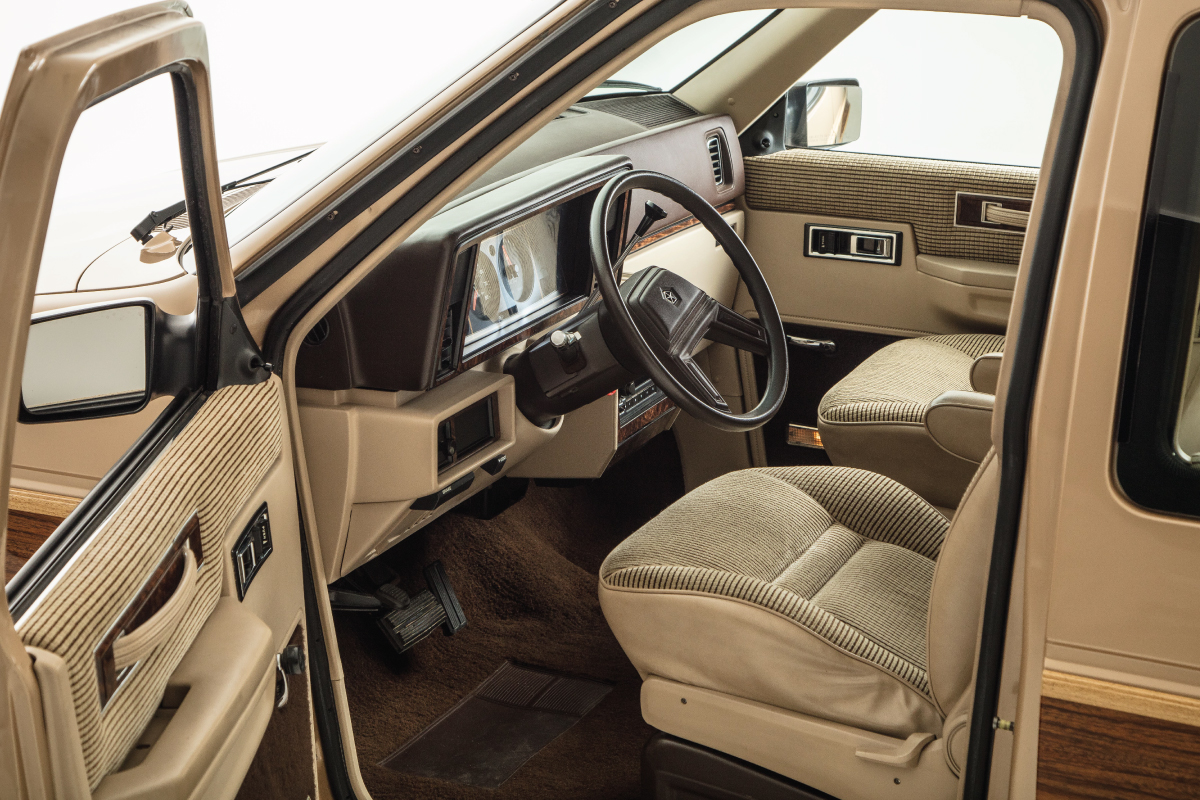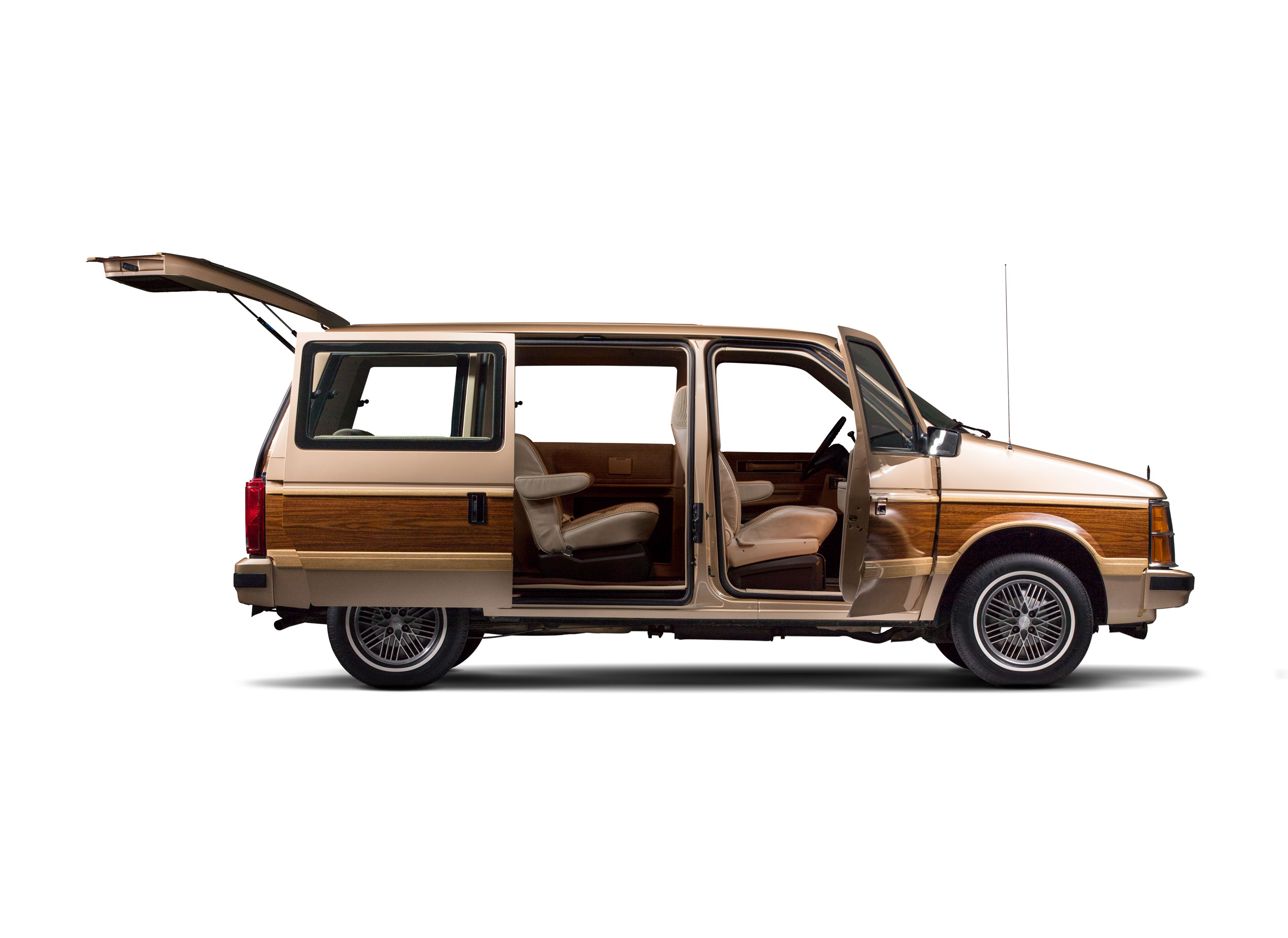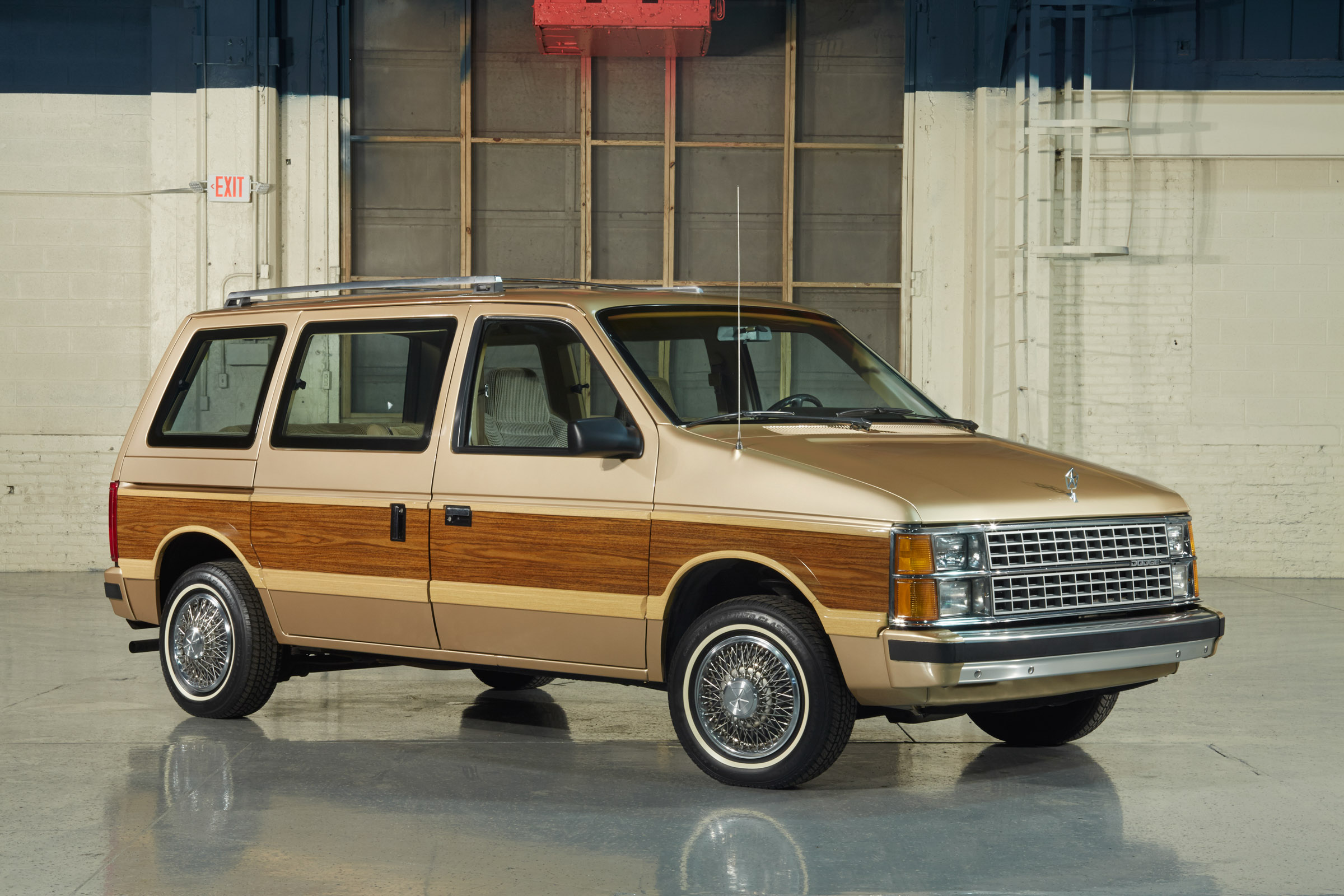The van that saved Chrysler and changed the way America hauled
Lee Iacocca had been a champion of the Ford brand for 32 years by the time he fell out of favor with Henry Ford II in mid-1978. Ford’s loss was Chrysler’s gain, however, because by that point, Chrysler needed all the innovative leadership it could get. It also needed money and, crucially, a halo car to keep making more of it. Iacocca’s broad, brutal cost-cutting measures helped. So did $1.5 billion in guaranteed loans from the U.S. government.
But it’s the 1984 Plymouth Voyager and Dodge Caravan, the unlikeliest halo cars of all time, that truly put Chrysler back on an upward trajectory.
Although the appearance of the Voyager and Caravan on American roads marked the dawn of an entirely new segment, the American minivan concept wasn’t new. At Ford, Iacocca and co-conspirator Hal Sperlich (the men responsible for that other segment-defining halo car, the Mustang) had pushed the idea of a smaller Econoline, but Henry II hated it—so much so that he fired Sperlich for pushing it so hard. Behind the scenes at Chrysler, too, plans for a small van had been around for years. But rear-wheel drive—the industry standard—was a big, costly obstacle to achieving the desired packaging.
With Iacocca and Sperlich reunited at Chrysler, all it took to make the idea a reality was the K-car, which was already in development. Its front-wheel-drive layout suited the kind of “garageable” packaging Sperlich envisioned. It was small on the outside and big on the inside. It had a big greenhouse and a low, flat cargo area to hold seven adults, lots of stuff, or some combination thereof. Internally designated the T115, the new vans rode on a modified K-car architecture dubbed the S-platform. They had a wheelbase that was 12 inches longer than the Reliant wagon’s, and they were nearly three inches shorter overall. Compared with the wagon’s 67.7 cubic feet of cargo space, the vans yielded 125 cubic feet when the rear seats were removed.



Production began at Chrysler’s plant in Windsor, Ontario, in October 1983, and the first Voyager rolled off the line on November 2, with Iacocca at the wheel. Chrysler sold 210,000 that first year and soon added production in St. Louis, with three shifts running at both plants to keep up with demand.
Although they were underpowered, equipped with a Chrysler 2.2-liter four making 101 horsepower or the optional 99-hp Mitsubishi-sourced 2.6-liter four, they were available with a five-speed manual, and acclaim for the $9600 vans was universal. Buyers loved them for all the reasons Sperlich imagined they would—they drove like a car and could haul plywood. Car and Driver named them to its 10Best list for 1985. “You seldom see a grumpy person behind the wheel of one,” editor/publisher David E. Davis, Jr., wrote at the time.
Today, a well-preserved first-year Voyager or Caravan is hard to find because no one drove these things with an eye toward a collectible future. Magic Wagon No. 1 (below), with 12,188 original miles, is owned by Fiat Chrysler. It’s a well-kept testament to the bravery of its creators and the untapped needs of an entire generation. That the Historic Vehicle Association has documented it as the 24th vehicle for inclusion on the National Historic Vehicle Register—alongside the likes of the first Tucker and the first Camaro—is fitting recognition, indeed.
The article first appeared in Hagerty Drivers Club magazine. Click here to subscribe to our magazine and join the club.






Fun fact… that van is actually a Plymouth and was “rebadged” as a Dodge via grille and other trim changes when Plymouth was axed.
I disagree. There were Plymouth (Voyager), Dodge (Caravan-Get it: Car-A-Van), and even Chrysler (Town and Country) versions…
WHAT! No mini van chatter? I owned an 84, 88, 93, and a 96. Best kid (team) hauler ever made. They were able to be customized to some extent. Yep under powered, but a smart driver had no problems. Smooth and quiet. Today it’s the $50,000 plus Suburban or something like it. How about $100,000 Jeep?
Minivans are getting some love now. They may have been underpowered in 84, but this 89 isn’t: https://www.youtube.com/watch?v=BvmidfoJRwY&t=14s
Sucks to be beat in your Hellcat by a minivan….
Having owned a 1998 Plymouth Grand Voyager, a 2014 Grand Caravan, and a 2017 Chrysler Pacifica, I can truly say that I am a fan of the concept they championed, and am glad Chrysler gave them the ability to bring it to fruition that Ford did not.
The original minivan with the turbo 4 was fun.
First one was an 1988, 15 vans later now driving a 2019 Pacifica. Covid and being retired have cut down on my mileage, and this one has only 98K. I usually sell mine around 130K, and know I have one out there running around with over 300K. Greatest all around vehicles I have ever owned.
I remember the start of this minivan very well, I was a young ironworker/rigging foreman during the plant tear out, There were approximately 1500-2000 tradesmen that came from all over to work the 2 WEEK!, 24/7 plant tear out, and I mean everything removed for either salvage but mostly scrap, the plant was taken to the bare walls. It was predicted that there could be 2 deaths before it was completed, that did not happen, but there were a couple of broken limbs. It was an organized madhouse, small fires to put out every day, 100’s of fork trucks, and industrial cranes running around the clock, Scrap trucks, Torch carts everywhere. I was in charge of a crew of ironworkers from out of town. We worked the second floor, they had opened up the west wall in 3-4 places, 16ft wide. The rail spur ran into the South end of the plant as well as directly along side. Every day they filled that spur with multiple gondola cars, we would literally dump electrical panels, air makeup components, structural steel, what ever that was scrap out those openings into the rail gondola cars ( about a 20ft drop into the cars). We would release the brakes manually on each car, bring them in under the opening, pulling them into position from the side with a large fork lift, fill the car, then bring the next one in underneath. Needless to say we would miss sometimes and over shoot the car, there was another ground crew that would periodically clear the track area of debris. In the end we made the schedule, I think the plant was about 2 million square feet back then, it’s over 3 million today. I was glad to be part of that History, and then worked there for the next year installing all the new spot welding equipment, body and white, final paint, and assembly automation, I got to see those first few hundred vehicles come off the line, it was quite an amazing transformation.
Made a lot of money with these vans delivering various things throughout the years